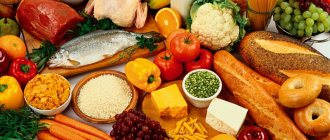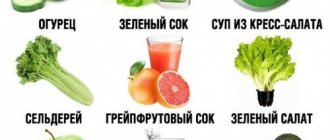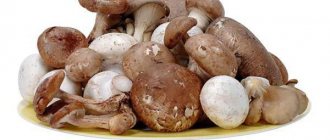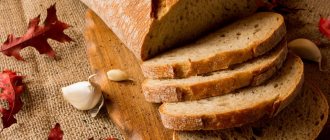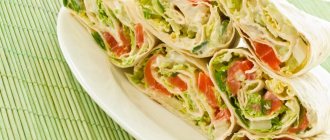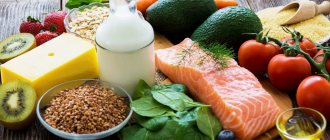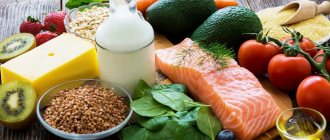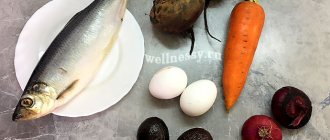General rules
In the era of the popularity of fast food, carbonated drinks and GMO products, the problem of obesity has become relevant not only for the adult population, but also for children, who tolerate excess weight much worse than adults. From a psychological point of view, it is more difficult for adolescents to cope with obesity , and excess weight at this age can be more destructive than in adulthood.
That is why the diet for teenagers involves a transition to a balanced, rational and light diet. A well-chosen diet is suitable not only for losing weight, but also for gaining weight. At the age of 12-17 years, the body is actively developing and growing, as a result of which adolescents experience an increased appetite and, as a result, a craving for bad eating habits. A lazy, sedentary lifestyle coupled with fast food, buns and chips can completely ruin your figure and even ruin your health. Therefore, it is so important that parents form habits in a timely manner and switch their children to a healthy diet: chips are replaced with dried fruits and nuts, and “fast food” is excluded.
A teenage diet for weight loss is very different from its counterparts for adults. She does not set a goal to lose the maximum number of kilograms in the shortest possible time. The weight will go away gradually due to the normalization of metabolism. The diet includes a complete set of proteins necessary for the growth of muscle tissue, and a set of carbohydrates for the complete restoration of energy reserves. The amount of fat in the diet is reduced. There will be exactly as much of it as the growing body requires. In addition, the diet menu must contain seafood rich in vitamins . Fermented milk products, but with a reduced percentage of fat (kefir, cottage cheese, milk, etc.), will also be useful. It is important to include vegetables and lean meats in your diet.
What is included in a healthy diet for a teenager?
Explain to your child in advance that an unbalanced diet or constant diets lead primarily to deterioration of appearance: hair loss, dandruff, flaky skin, peeling nails. Due to active growth and hormonal changes, the teenager’s body experiences an increased need for protein
.
Animal protein is preferable - meat, poultry, fish. Vegetarianism, which is becoming increasingly popular among teenagers, is strictly contraindicated
.
It can result in iron deficiency anemia, disruption of growth and functioning of the endocrine system. For girls, this threatens the cessation of menstruation and potential infertility. The body of adolescents experiences an equally strong need for calcium. Its deficiency
leads to diseases of the musculoskeletal system: scoliosis and poor posture, and even the appearance of osteochondrosis and osteoporosis in older age.
The best source of calcium is milk and fermented milk products, especially cottage cheese. In addition, fats should be present
.
At the same time, it is better to avoid saturated fats. Approximately 30 percent of fats should be vegetable fats, and the rest is best obtained from dairy products, such as butter and sour cream. You should not abuse fast carbohydrates - there should be no more than 20-30 percent
. And the remaining 70-80 are foods rich in fiber: grains, vegetables and fruits.
Indications
Diets for teenagers should be aimed at limiting the entry of fat into the body and inhibiting its deposition around internal organs. Many teenage diets are “quick”; their essence is to urgently destroy fat deposits in the body by reducing the caloric content of the diet. The body of a teenager is not fully formed, and for the proper functioning of all organs and tissues, a certain ratio and amount of fats, proteins and carbohydrates are required. Therefore, such a diet should be based on a balanced and nutritious diet.
A little theory
During the period of active growth, a person’s metabolism is most intense, and protein
per unit of body weight, a teenager needs significantly more than an adult. Actually, children have a higher basal metabolic rate than adults.
Basal metabolism is the minimum energy expenditure
, necessary to maintain the life of the body in a state of complete rest, with the exclusion of all internal and external influences for 12 hours after eating. That is, this is the number of calories that are spent lying quietly and breathing while the heart pumps blood through the veins.
By the hour
Schoolchildren must eat every 3.5-4 hours to cover the energy spent on mastering the school curriculum.
It turns out that a growing person’s energy consumption is much higher
than that of an adult. And you need to feed him correctly - in sufficient quantities and in a balanced manner.
The optimal ratio of proteins, fats and carbohydrates in the diet for high school students is: 1:1:4
.
It is also worth remembering the rapid growth of a teenager’s skeleton and paying special attention to the amount of calcium
. The absorption of calcium depends on the content of phosphorus and magnesium. If these elements enter the body in excess, calcium simply will not be absorbed.
Children need to get enough water
- one of the main components of body cells. Starting from 7 years of age, according to the standards, children are entitled to 50 ml of liquid per 1 kg of body weight per day - in the form of drink and food. These standards do not include sweet soda and instant drinks from bags. After all, there is nothing in them except sugar and dyes.
By the way, girls 14-17 years old are entitled to an average of 2760 kilocalories per day, and boys 3160.
Despite the fact that teenagers may consider themselves “too fat” or “not toned enough.” Nevertheless, all these “extra” calories from their point of view are used to complete the construction of their body
. Which is now growing longer than wide, no matter what the mirror reflects. And the parent’s task is to explain to his son or daughter why he will now have to eat well.
Diets for teenagers
During a period of active growth and hormonal changes, a child needs proper nutrition for good health and excellent appearance.
Authorized Products
Taking into account nutritional standards for teenagers, soups must be present on the menu. They can be cooked in meat broth without flour dressing or in vegetable broth. You can add eggs to soups. Consumption of cereals in the diet is limited. Oatmeal and buckwheat porridge are allowed for consumption; they can be consumed, but not often. It is recommended to limit spices and salt as much as possible.
Everyone knows about the benefits of seafood. An undeniable advantage is the lack of fat in them (scallops, seaweed, shrimp, squid). Seafood is rich in microelements (manganese, iodine, iron, magnesium, potassium) and B vitamins.
It is better to steam, boil, bake, stew food. During frying, a huge amount of fat is absorbed into the food, so this method of cooking is limited.
Table of permitted products
| Proteins, g | Fats, g | Carbohydrates, g | Calories, kcal | |
Vegetables and greens | ||||
| vegetables | 2,5 | 0,3 | 7,0 | 35 |
| greenery | 2,6 | 0,4 | 5,2 | 36 |
Fruits | ||||
| fruits | 0,8 | 0,3 | 11,5 | 56 |
Berries | ||||
| berries | 0,7 | 0,3 | 9,4 | 44 |
Mushrooms | ||||
| mushrooms | 3,5 | 2,0 | 2,5 | 30 |
Nuts and dried fruits | ||||
| nuts | 15,0 | 40,0 | 20,0 | 500 |
| candied fruit | 2,0 | 1,0 | 71,0 | 301 |
| dried fruits | 2,3 | 0,6 | 68,2 | 286 |
Cereals and porridges | ||||
| porridge | 3,3 | 1,2 | 22,1 | 102 |
| porridge on water | 3,0 | 0,6 | 18,5 | 91 |
| porridge with milk | 3,3 | 2,9 | 17,4 | 105 |
Bakery products | ||||
| crackers | 11,2 | 1,4 | 72,2 | 331 |
| Rye bread | 6,6 | 1,2 | 34,2 | 165 |
Confectionery | ||||
| jam | 0,3 | 0,2 | 63,0 | 263 |
| jam | 0,3 | 0,1 | 56,0 | 238 |
| jelly | 2,7 | 0,0 | 17,9 | 79 |
| paste | 0,5 | 0,0 | 80,8 | 310 |
Raw materials and seasonings | ||||
| ginger | 1,8 | 0,8 | 15,8 | 80 |
| honey | 0,8 | 0,0 | 81,5 | 329 |
Dairy | ||||
| milk | 3,2 | 3,6 | 4,8 | 64 |
| kefir | 3,4 | 2,0 | 4,7 | 51 |
| cream | 2,8 | 20,0 | 3,7 | 205 |
| sour cream | 2,8 | 20,0 | 3,2 | 206 |
| Ryazhenka | 2,8 | 4,0 | 4,2 | 67 |
| kumiss | 3,0 | 0,1 | 6,3 | 41 |
| katyk | 2,8 | 3,2 | 4,2 | 56 |
| yogurt | 4,3 | 2,0 | 6,2 | 60 |
Cheeses and cottage cheese | ||||
| cheese | 24,1 | 29,5 | 0,3 | 363 |
| cottage cheese | 17,2 | 5,0 | 1,8 | 121 |
Meat products | ||||
| beef | 18,9 | 19,4 | 0,0 | 187 |
| veal | 19,7 | 1,2 | 0,0 | 90 |
| mutton | 15,6 | 16,3 | 0,0 | 209 |
| rabbit | 21,0 | 8,0 | 0,0 | 156 |
| venison | 19,5 | 8,5 | 0,0 | 154 |
| horsemeat | 20,2 | 7,0 | 0,0 | 187 |
| lamb | 16,2 | 14,1 | 0,0 | 192 |
Bird | ||||
| chicken | 16,0 | 14,0 | 0,0 | 190 |
| chickens | 18,7 | 7,8 | 0,4 | 156 |
| turkey | 19,2 | 0,7 | 0,0 | 84 |
Eggs | ||||
| omelette | 9,6 | 15,4 | 1,9 | 184 |
| eggs | 12,7 | 10,9 | 0,7 | 157 |
Fish and seafood | ||||
| fish | 18,5 | 4,9 | 0,0 | 136 |
Non-alcoholic drinks | ||||
| mineral water | 0,0 | 0,0 | 0,0 | — |
| coffee | 0,2 | 0,0 | 0,3 | 2 |
| green tea | 0,0 | 0,0 | 0,0 | — |
| black tea | 20,0 | 5,1 | 6,9 | 152 |
Juices and compotes | ||||
| compote | 0,5 | 0,0 | 19,5 | 81 |
| juice | 0,3 | 0,1 | 9,2 | 40 |
| * data is per 100 g of product | ||||
Immunity in teenagers and how to strengthen it?
31.03.2021
Many teenagers, due to heavy workloads at school or university, as well as stress, often experience decreased immunity , sometimes this happens quite sharply. If a person notices drowsiness or insomnia , he gets tired very quickly, he often has a headache, there is discomfort in the muscles and joints , then this indicates a decrease in immunity . These are the first signals that require immediate response. If you miss this problem at an early stage, then the next stage is constant human illness, various viruses and infections. The final stage is a set of chronic diseases.
A decrease in immunity can occur for a number of reasons. These include: environmental degradation, poor nutrition, lack of vitamins and nutrients in the body, constant stress, overwork and lack of sleep.
Immunity is formed in the mother’s womb, then it strengthens and grows with the child, but there are so-called immunity when the child is most vulnerable. A teenager's body weakens when the process of hormonal changes begins. For girls this is typical at the age of 12-13, for boys this process begins later - at 14-15. At this age, it is necessary to closely monitor children and maintain their immunity .
What to do to boost your immunity?
There are many remedies, but the main thing it all comes down to is to follow a regime, sometimes give the body physical activity and monitor nutrition so that it is as balanced and healthy as possible. If you use one thing, there will be no result; you need to do everything in combination. A teenager should regularly eat meat; it is better to give preference to beef and veal, vegetables and fruits, fish and seafood, cereals, and dairy products. These healthy foods should be in the diet constantly, and not occasionally, as they contain useful substances that the body regularly needs for healthy functioning. It is also important to teach a child from childhood to drink clean water, homemade juices and compotes, and not various harmful drinks. It is advisable to exclude unhealthy foods from a teenager’s diet, such as processed foods, chips, chocolate, and confectionery.
As for the second important aspect in the matter of raising immunity , this is sports. Most doctors recommend swimming to help the body get stronger and boost immunity . But here everyone chooses based on personal preferences. You can do fitness, jogging, gymnastics, or just walk in the fresh air. But the main thing is not to overdo it. It has been proven that too much stress can harm the body. You can also work on hardening the body; for some, a douche or a contrast shower is suitable. It is believed that this is a good workout for the immune system .
If you teach your children to this way of life from childhood, especially by personal example, then these simple rules will become a habit and will be part of the child’s life.
Published in Immunology Premium Clinic
Fully or partially limited products
To avoid digestive problems and make the diet as effective as possible, it is recommended to exclude certain foods from the diet.
Children's favorite hamburgers, cheeseburgers, french fries and any products from fast food restaurants are prohibited. Such dishes are prohibited not only because of their high calorie content, but also because of the accumulation of “bad” cholesterol on the walls of blood vessels, which negatively affects their elasticity and permeability.
You can't eat chips. They quickly satisfy hunger, cause dependence and addiction, contain a huge amount of calories, and negatively affect the functioning of the digestive tract.
Butter buns give you not only pleasant tasty moments, but also those hated extra pounds. This does not mean that you need to completely give up baked goods, but it is still better to limit your consumption of baked goods. It is better to eat the bread as toast or lightly dry it.
The teenage body needs fast carbohydrates, the source of which is sweets. If possible, it is better to limit them, especially if you have a sedentary lifestyle. The same goes for sweet carbonated drinks. It is better to replace them with freshly squeezed juices or plain still water. Store-bought juices from boxes are prohibited.
Table of prohibited products
| Proteins, g | Fats, g | Carbohydrates, g | Calories, kcal | |
Snacks | ||||
| potato chips | 5,5 | 30,0 | 53,0 | 520 |
| banana chips | 2,3 | 33,6 | 50,7 | 519 |
Bakery products | ||||
| baguette | 7,5 | 2,9 | 51,4 | 262 |
| pita | 8,1 | 0,7 | 57,1 | 274 |
| pita | 7,4 | 0,8 | 49,9 | 242 |
| Arctic cod | 7,9 | 9,4 | 55,5 | 339 |
Confectionery | ||||
| candies | 4,3 | 19,8 | 67,5 | 453 |
| cake | 3,8 | 22,6 | 47,0 | 397 |
| halva | 11,6 | 29,7 | 54,0 | 523 |
Ice cream | ||||
| ice cream | 3,7 | 6,9 | 22,1 | 189 |
Cakes | ||||
| cake | 4,4 | 23,4 | 45,2 | 407 |
Chocolate | ||||
| chocolate | 5,4 | 35,3 | 56,5 | 544 |
Raw materials and seasonings | ||||
| mayonnaise | 2,4 | 67,0 | 3,9 | 627 |
| sugar | 0,0 | 0,0 | 99,7 | 398 |
| salt | 0,0 | 0,0 | 0,0 | — |
Meat products | ||||
| pork | 16,0 | 21,6 | 0,0 | 259 |
| salo | 2,4 | 89,0 | 0,0 | 797 |
| bacon | 23,0 | 45,0 | 0,0 | 500 |
| ham | 22,6 | 20,9 | 0,0 | 279 |
| raw smoked pork belly | 7,6 | 66,8 | — | 632 |
| smoked-baked pork loin | 10,2 | 48,2 | — | 457 |
Alcoholic drinks | ||||
| vermouth | 0,0 | 0,0 | 15,9 | 158 |
| whiskey | 0,0 | 0,0 | 0,4 | 235 |
| vodka | 0,0 | 0,0 | 0,1 | 235 |
| cognac | 0,0 | 0,0 | 0,1 | 239 |
| liquor | 0,3 | 1,1 | 17,2 | 242 |
| beer | 0,3 | 0,0 | 4,6 | 42 |
| moonshine | 0,1 | 0,1 | 0,4 | 235 |
| tequila | 1,4 | 0,3 | 24,0 | 231 |
| schnapps | 0,0 | 0,0 | 4,0 | 200 |
Non-alcoholic drinks | ||||
| sprite | 0,1 | 0,0 | 7,0 | 29 |
| tonic | 0,0 | 0,0 | 8,3 | 34 |
| Fanta | 0,0 | 0,0 | 11,7 | 48 |
| energy drink | 0,0 | 0,0 | 11,3 | 45 |
| * data is per 100 g of product | ||||
Proper nutrition for teenagers (Menu and meal plan)
A healthy diet requires 4 meals a day.
Breakfast
The very first and most important meal of the day. Must include proteins and carbohydrates. It is better to give preference to buckwheat and oatmeal, omelette, fresh fruits and vegetables. Cooking breakfast in a hurry is not allowed; the menu must be thought out in advance, because breakfast gives you a boost of energy for the whole day. Everything that is eaten in the morning is consumed by the body during the day and is not stored in fat reserves.
Dinner
The second meal must contain hot dishes. It is better to give preference to soups. Broths allow you to avoid problems with digestion and excess weight.
Afternoon Tea and Dinner
Food for the final two meals should be light in calories. Preference is given to dairy products, vegetables, fruits, fish, steamed meat (no more than 200 grams).
How to apply theory in practice?
In fact, there is nothing new here: minus fast food, plus cottage cheese and lean meat. Milk and dairy products are traditionally the main source of calcium
for children and teenagers.
A teenager should eat meat and fish dishes in the first half of the day, since protein-rich
foods increase metabolism and act as a stimulant. Fruits (at least 250 g per day) and vegetables are essential, and about half of all fats should be vegetable fats.
Not only is a high school student growing rapidly, but his academic load is also increased. Without a balanced healthy diet and adequate physical activity, coping with all this is not so easy.
Sample menu for the week
Monday
| Breakfast |
|
| Dinner |
|
| Afternoon snack |
|
| Dinner |
|
Tuesday
| Breakfast |
|
| Dinner |
|
| Afternoon snack |
|
| Dinner |
|
Wednesday
| Breakfast |
|
| Dinner |
|
| Afternoon snack |
|
| Dinner |
|
Thursday
| Breakfast |
|
| Dinner |
|
| Afternoon snack |
|
| Dinner |
|
Friday
| Breakfast |
|
| Dinner |
|
| Afternoon snack |
|
| Dinner |
|
Saturday
| Breakfast |
|
| Dinner |
|
| Afternoon snack |
|
| Dinner |
|
Sunday
| Breakfast |
|
| Dinner |
|
| Afternoon snack |
|
| Dinner |
|
Diet menu for teenagers
Sample menu for teenagers:
Breakfast - a soft-boiled egg, a tomato, weak coffee or tea, a few pieces of toast with cheese and butter.
Second breakfast – apple with yogurt (low-fat).
Lunch – vegetable salad (dressing with a teaspoon of olive oil and lemon juice), spaghetti – 200 g.
Afternoon snack – low-fat kefir, cauliflower or boiled carrots.
Dinner – tomato juice, fish baked with tomatoes and herbs.
Examples of breakfast dishes are buckwheat porridge with veal, nuts, rice and cottage cheese casserole, omelet, apple, banana. Drinks include kefir, milk, weak coffee, tea.
Examples for lunch: stewed cabbage, baked potatoes, boiled beef, lean borscht, stewed vegetables with cutlets, chicken. Drinks – juice, tea.
Examples for dinner are liver pate with tomato and bread, vegetable salad with ham, fish fillet baked in foil, cottage cheese with dried apricots and sour cream. Drinks – tomato juice, milk, herbal tea with honey.
It is best to prepare the final menu with the help of a qualified nutritionist. The diet may change due to medical recommendations.
Recipes
Ratatouille
Ingredients:
- eggplant;
- zucchini;
- small potatoes 3 pcs.;
- 3 tomatoes;
- tomato paste 2 tbsp. spoons;
- sour cream 200 g;
- liter of water;
- spicy herbs, pepper, salt.
Recipe
Preheat the oven to 180 degrees. Peel all the vegetables, leaving the zucchini untouched. Cut everything into rings no more than 10 mm thick. Place all the vegetables in a tall baking dish with high sides, alternating them: zucchini - potatoes - eggplant - tomato. Next, start preparing a mixture of sour cream, tomato paste and water. Pour the resulting mixture over the vegetables. Season with salt and pepper to taste, adding herbs. Keep in the oven until done, about 30 minutes. Sprinkle the dish with herbs and cheese before serving.
Apples baked with cottage cheese
Ingredients:
- large apples 4 pcs.;
- cottage cheese 2 packs;
- sugar 4 tbsp. spoons;
- dried fruits.
Recipe
Place cottage cheese in a bowl and mix it with sugar. Wash thoroughly and finely chop the dried fruits, then mix with cottage cheese. You need to cut off the tops of apples, carefully clean the middle and fill the cavity with a filling of cottage cheese and dried fruits. Place the filled apples in an oven preheated to 180 degrees for 7 minutes. Serve the dish warm.
Crab stick salad with avocado
Ingredients:
- crab meat or crab sticks;
- 1 lemon;
- 1 avocado;
- low-fat mayonnaise;
- half a medium onion.
Recipe
Peel and cut the avocado into small cubes, sprinkle with lemon juice. Chop the onion and crab sticks. Mix all ingredients and season with low-fat mayonnaise. As a dressing, it is better to use a self-prepared mixture of mayonnaise and sour cream to give the dish a light and delicate taste.
Quitting the diet
A smooth exit from the diet is recommended. In general, a teenage diet implies a balanced and proper diet, which you should try to adhere to constantly. Therefore, when leaving the diet, you can sometimes allow yourself your favorite dishes, but try to correct your weight through physical activity if there are errors in your diet. You can accustom yourself to a different pattern: you eat forbidden foods, and the next day you deload on a completely healthy menu (fruits, vegetables, dairy products, seafood, chicken eggs).
Also, upon completion of the diet, it is important to ensure that the teenager has a full breakfast and at least two meals, the volumes of which need to be controlled. Physical activity and adequate water regime are required to normalize metabolism. Try to give up fast food, sweets, baked goods, processed foods, pasta, salty and fatty foods. Avoid French fries, crackers, chips, candy bars like Snickers and Mars, energy drinks and soda.
Advantages and disadvantages
| pros | Minuses |
|
|
What products are needed
To ensure that development is not disrupted, the immune system is strengthened, and the period of hormonal changes passes easily, adolescents should consume the following foods:
- Protein foods include meat, fish (dietary varieties), beans, nuts, eggs, milk, low-fat dairy products. You can supplement this list with seafood. Protein foods accelerate muscle growth, strengthen them, and help burn excess fat;
- healthy fats: vegetable oils, salmon, tuna, trout, nuts. These products help develop, improve the condition of hair and skin;
Carefully! Teenagers should avoid unhealthy fats that negatively affect the cardiovascular system. It is better to give up whole milk, fatty meats, coconut and palm oil, confectionery products with rich cream, snack products, and fried foods.
- sources of complex carbohydrates: cereals, vegetables, whole grain bread, legumes, fruits, berries. They charge the body with energy. Simple carbohydrates (sweet pastries with fillings, sweets) are best avoided;
- milk and products made from it, low-fat cheeses, cabbage, nuts, seeds, rice, lentils, and broccoli saturate the body with calcium. This substance strengthens bone tissue, normalizes blood clotting, and increases stress resistance;
- Thanks to fish, seafood, beef, legumes, buckwheat, white cabbage, potatoes, spinach, the body is saturated with iron. This substance supports the growth of adolescents, replenishes blood loss in girls during menstruation;
- A lot of fiber is found in vegetables and fruits. Coarse fibers cleanse the body of waste and toxins, and thanks to antioxidants, protect cells from damage.
In addition, the child needs clean filtered water. The daily volume depends on weight (30 ml/1 kg).
Important Terms
- try to completely avoid salt, pepper and spices;
- prepare juices yourself from fresh fruits;
- Steam the meat.
To start the weight loss process, a teenager’s daily caloric intake should be reduced by 20%. For girls - 2500 kcal, for guys - 2700. This figure can be reduced by 20%, but no more, otherwise problems with the health of the growing body will begin. For a teenager to grow, preference in the daily diet should be given to healthy carbohydrates (vegetables, cereals, fruits). Also important is the frequency and regularity of food intake. It is advisable to eat at the same time, without skipping meals. Frequency – 4 times a day.
It is better to bake dishes in the oven, steam or boil them. Completely avoid fried and fatty foods. Adequate physical activity will not only strengthen and shape muscles, but will also speed up the fat burning process. Effective exercises for girls are dancing and swimming. For boys - football, running, team games.
By following these simple rules, you can really lose weight without health problems. Extra pounds will go away naturally, without stress to the body.
Recommendations from nutritionists
Nutritionists help create a healthy diet for teenagers. Teenagers are recommended to eat 4 meals a day with food distributed according to total calorie content throughout the day:
- breakfast – 25%;
- lunch – 40-50%;
- dinner – 15-20%.
The daily diet should be composed so that the ratio of proteins, fats and carbohydrates corresponds to the scheme 1:1:4. Thus, the diet should contain 4 times more carbohydrates than proteins and fats.
A teenager’s daily food intake table allows you to independently calculate the total calorie content for the day and the distribution of proteins, fats and carbohydrates. Compiling a teenager’s diet, table:
| Diet | Name of the dish | Products necessary for its preparation | Weight, g | Squirrels | Fats | Carbohydrates | Calorie content, kcal |
| Breakfast | |||||||
| Dinner | |||||||
| Afternoon snack | |||||||
| Dinner |
Diet
The main source of energy is food. A teenager's diet should be varied and include products of animal and plant origin. The optimal ratio of proteins, fats and carbohydrates can be expressed as 1:1:4, that is, a teenager should receive 4 times more carbohydrates than proteins or fats.
Proteins are used to build tissues and organs of the body: muscles, nerves, blood, brain, heart. Proteins are especially important for the formation of the body's defenses - the so-called immune bodies. Proteins are found in meat, turkey, fish, milk, egg whites, cottage cheese, cheese, nuts, and legumes (green peas, beans, lentils). The student’s diet should include 200 grams of meat or chicken daily, divided into two meals (lunch, dinner). Fish should be consumed 2-3 times a week, 100 g, cottage cheese – 3 times a week, 100 g, cheese – 50 g daily, natural yogurt or kefir – 150 ml.
Fats and carbohydrates play a significant role in the metabolism of a teenager’s body. Their amount in a teenager’s diet is reflected in his body weight. The most valuable fats for teenagers are dairy fats (butter, cream, sour cream). They are well absorbed and are a source of vitamins A and D. The daily diet should also include 10 - 20 g of vegetable oil, which contains Omega 6 fatty acids, which are important for a fast-growing body.
Carbohydrates are found mainly in products of plant origin - sugar, bread, cereals, pasta, potatoes, vegetables, fruits, berries. Complete porridge, not from a bag! Pasta made from durum wheat, grain bread, and potatoes will give the student energy for 4 hours.
There are a lot of fast sugars in sweets, jam, marmalade, honey and other confectionery products. By consuming them for breakfast, the student will be hungry within 2 hours and his learning ability will deteriorate.
Cakes, pastries, waffles, chocolates and chocolates contain not only a lot of sugar, but also vegetable fat. In the production of confectionery products, cheap oils (palm, coconut) are often used, which have a negative effect on the gastrointestinal tract of a teenager and contribute to the development of excess weight. Schoolchildren should be guided on how much sweets they can consume: 2-3 sweets a day, but only 1.5 hours after a full meal.
A significant portion of the minerals obtained from food is used for bone growth and teeth formation. A lack of calcium and phosphorus salts in the diet leads to improper development of bones, damage to teeth and disruption of the central nervous system of a teenager. The richest in calcium and phosphorus are milk and dairy products (especially cottage cheese and hard cheese). It is recommended that children be given milk, cottage cheese, and yogurt. Kefir with a low and medium fat content, since excess fat blocks the absorption of calcium. With cheese it’s the opposite. It is better to give children hard, aged varieties of cheese than processed cheese or soft cheeses. Don't forget that calcium is also found in fish. A serving of fish (100 grams) will supply a teenager’s body with calcium by 35% of the daily requirement.
It is useful to prepare cheesecakes, dumplings, porridge with milk, milk soups for teenagers, and be sure to give vegetable side dishes for meat and fish dishes. This will allow you to regulate the correct ratio of calcium and phosphorus in the teenager’s body. Calcium salts contained in plant foods (nuts, celery, green beans, cabbage, dried apricots) are poorly absorbed by the teenager’s body. When combining products of plant and animal origin (for example, milk with cereals), calcium absorption increases significantly.
Phosphorus salts enter the body from products of animal and plant origin (liver, cheese, fish, beans, nuts, cereals, etc.). They have a beneficial effect on the central nervous system of a teenager, especially during periods of intense mental work. A varied diet satisfies the daily need of a teenager’s body for minerals, in particular salt. Table salt adds flavor to food, and is also used by the teenager’s body to produce hydrochloric acid, which is part of the gastric juice and plays a large role in the digestion of food. A teenager should consume 8-10 g of table salt per day, preferably sea salt or iodized salt. If it is deficient, a teenager may experience serious disorders: heart function is disrupted, dizziness and fainting occur.
Reviews and results
Vlada, 15 years old: “... At school they teased me and called me “fat”, they constantly found fault with me about this, and the boys never stood up for me, and did not even look in my direction. I didn’t even want to go to school, I was looking for excuses, either a fever or a stomach ache... I tried different diets, but my willpower didn’t allow me to exhaust myself, and I didn’t see any results. I looked for information on the Internet and consulted with my mother. We decided to try the teenage diet. My mother’s nutritionist helped me create a daily diet. I liked proper nutrition, I didn’t have any pain, and I didn’t feel hungry. In the evenings, I started walking, and then switched to light jogging. After just 2 weeks I became 5 kg lighter. In six months I managed to get rid of 15 extra pounds, I became thinner, my complexion improved, and my self-esteem rose.”
The diet is well tolerated, forms the right habits, improves health, improves immunity, and allows you to get rid of excess weight without harm to the growing body. The diet does not have a strict time frame; it can be followed for a long time.
